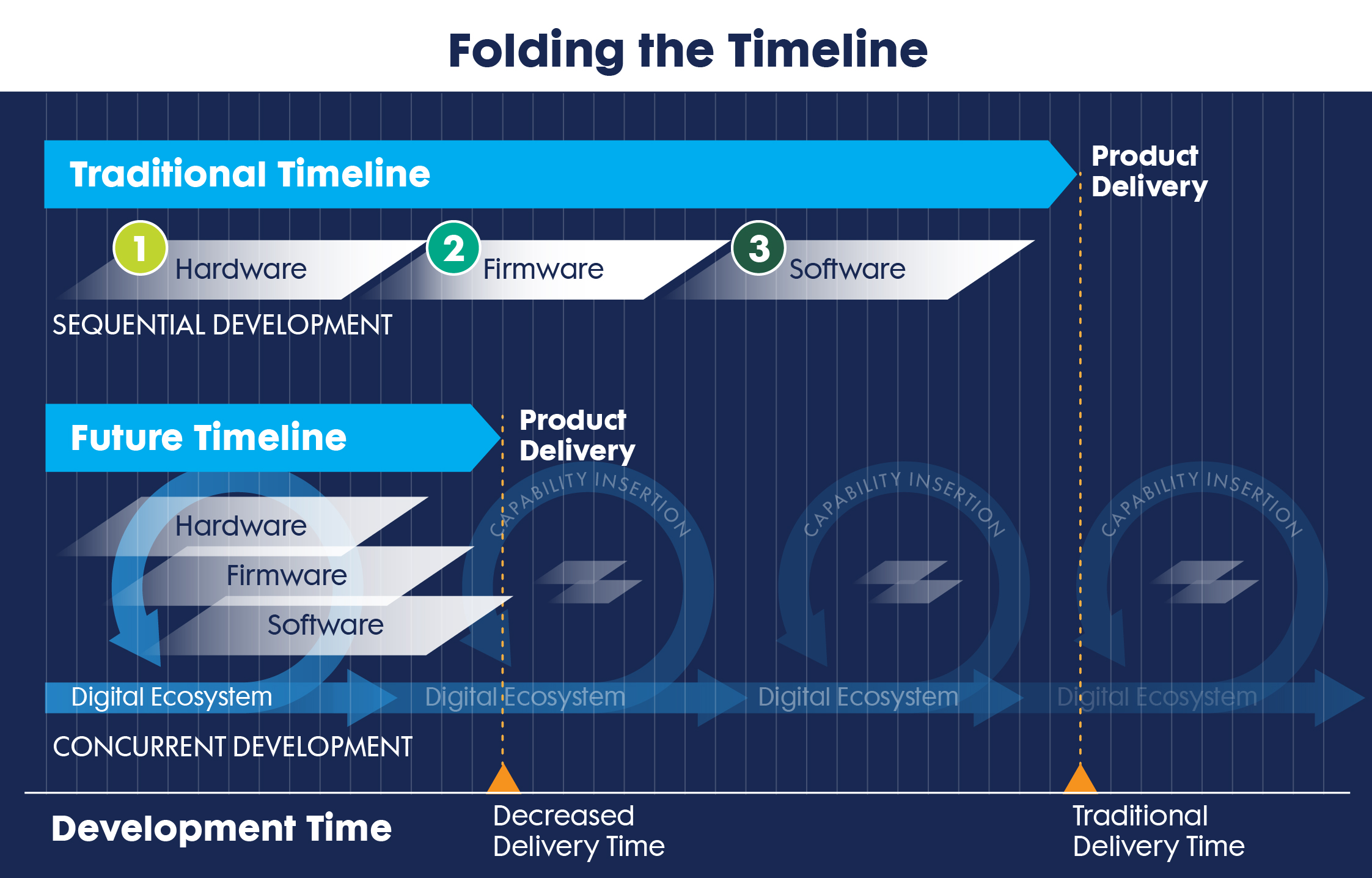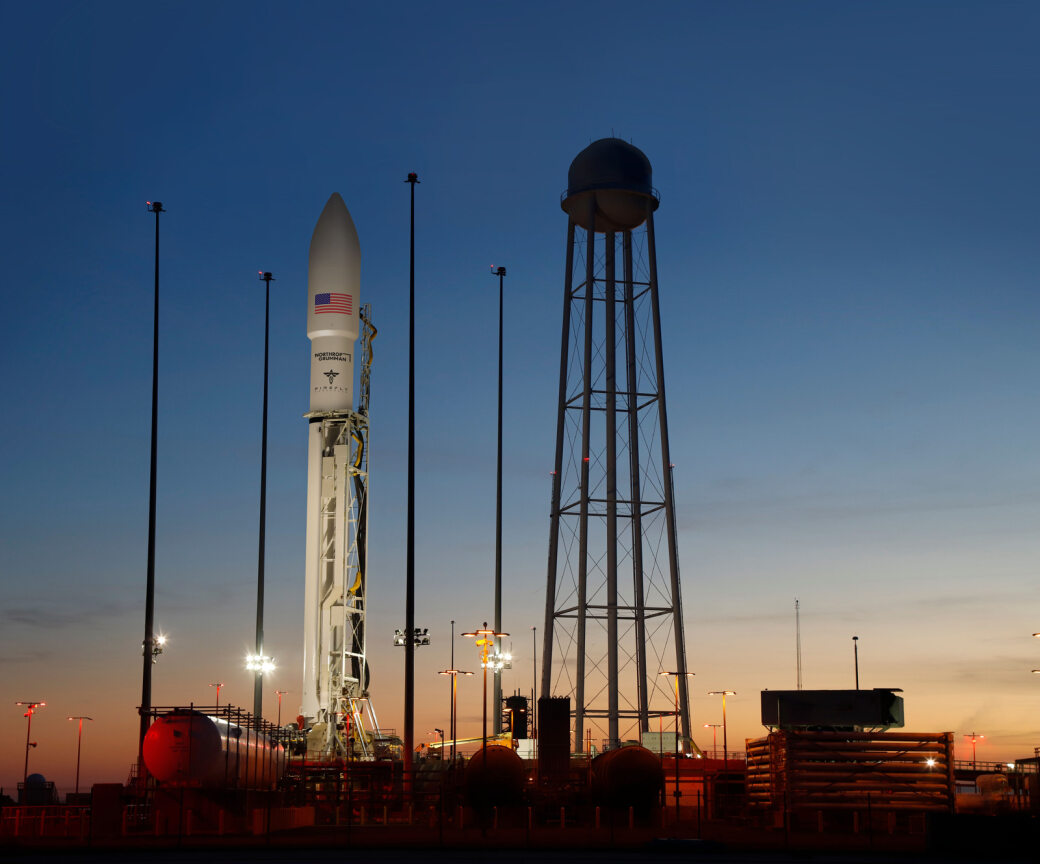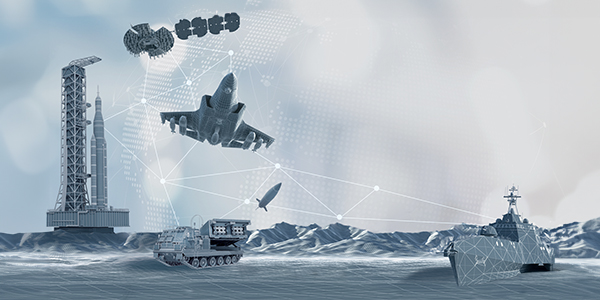In today’s threat environment, adversaries are throwing sophisticated and dynamic offensive and defensive electronic warfare (EW) effects such as jamming and countermeasures onto the battlefield, creating dense, highly contested spectral environments.
These evolving technological threats present unprecedented challenges for our warfighters, especially as they’re augmented by: an explosion of data; the drive to establish connected systems that rapidly generate actionable insights; new adversary sensor-to-shooter concepts that make use of multispectral ISR platforms; and increasingly rapid movement of target data to adversary weapons and engagement at much longer ranges.

Brent Toland is vice president and general manager, Airborne Multifunction Sensors, Northrop Grumman.
“Our multifunction sensors deliver game-changing technology to the warfighter. From first look to first decision and first engagement, the sensors provide control of the air and true tactical superiority,” said Brent Toland, vice president and general manager, Airborne Multifunction Sensors, Northrop Grumman. “Further, the hardware will remain relevant for decades, requiring software upgrades only.”
The value of multifunction sensors
Northrop Grumman’s development of multifunction solutions is designed to overcome traditional sensor limitations, allowing warfighters to make faster, more reliable decisions.
“Our adversaries are creating dynamic, multi-platform threats across the electromagnetic spectrum,” said Toland. “This is where multifunction sensors come in, bringing active and passive capabilities to the battlespace.”
An appropriate balance of multifunction sensors — which can be fielded on individual platforms as part of a family of systems — provides mission flexibility and decisive advantage in competition, crisis and conflict.
Northrop Grumman’s multifunction sensors scale and can serve both crewed and uncrewed systems. The modularity and open architecture design principles mean these sensors are platform agnostic and can easily integrate with other processing capabilities.
![Multifunction Infographic_22-071[1]](https://sites.breakingmedia.com/uploads/sites/3/2023/09/Multifunction-Infographic_22-0711.png)
Illustration by Northrop Grumman
Historically, an engagement chain often entailed just one platform with a single capability to detect, find, fix, track and engage targets. Today, peer adversaries have weaponry such as hypersonic missiles and advanced EW effects that require the U.S. and its allies to detect threats from further ranges.
In response, the mission has pivoted to what Toland calls “engagement webs” — an environment where a variety of platforms, although sometimes operating separately, also work jointly to find, fix, engage and assess.
“If you plot a line from left to right on what a platform or sensor contributes across the path of engagement, it has become not a chain, but a web with many networked sensors and platforms contributing,” explained Toland. “The concept includes distributed active and passive sensors networked together as a family of systems to solve the toughest mission challenges.
“Leveraging information from multiple platforms provides different views and perspectives of the battlespace. If you’re able to communicate and leverage information between platforms, you can sense and counteract threats quicker and at greater distances.”
Combat-proven multifunction solutions
Northrop Grumman has long-been a pioneer for sensors and radars and is the sole Active Electronically Scanned Array (AESA) radar supplier for 5th generation fighter platforms. They continue to push the boundaries of what’s possible by building on this technology to develop its multifunction solutions.
Their Electronically Scanned Multifunction Reconfigurable Integrated Sensor (EMRIS) — a new, ultra-wideband multifunction sensor — is one of the first multifunction systems designed as a fully digital AESA, utilizing technology from the Defense Advanced Research Projects Agency’s (DARPA) Arrays on Commercial Timescales (ACT) program.
By applying the flexibility of a digital AESA, EMRIS can perform simultaneous functions including radar, electronic warfare and communications. Northrop Grumman has also demonstrated that the building-block architecture of EMRIS can quickly leverage technology developed for other programs to provide significant communications enhancements and maintain resilient connectivity in contested environments. The sensor’s architecture is open, scalable and reconfigurable and includes a variety of mounting configurations for applicability across platforms and domains. It’s currently in integration and test.
Additionally, Northrop Grumman has simultaneously transmitted advanced sensor data and communications using its Re-Scalable Aperture for Precision Targeting Radar (RAPTR) and Mini-Communications, Navigation, Identification (Mini-CNI) systems on a UH-60V Black Hawk helicopter. The RAPTR and Mini-CNI performed bi-directional air-to-ground communications functions while simultaneously performing air-to-air searching and tracking of targets.
“Multifunction isn’t new for us. Radar and EW capabilities built into our advanced AESAs have been providing unparalleled capability to detect, suppress and counter the most advanced enemy air defenses for decades,” said Toland. “We are leveraging our AESA expertise and innovative approaches to producing, upgrading and expanding these capabilities, to develop multifunction sensors — by adding communication capability to radar and EW, for example.”
Folding the Timeline
It’s clear that peer threats require a change in thought — from acquisition paths and development activities to how the defense industry develops sensors and systems.
A typical timeline for developing a sensor is to build the hardware, followed by the firmware, and then develop software before moving to integration and test. Building a platform also follows this timeline — taking valuable time that our warfighters don’t have.
Through digital transformation, Northrop Grumman is shifting their design approach to meet urgent customer requirements. By taking a page from commercial industry playbooks — where, for example, the software for the next two releases of a company’s smartphone is developed before the hardware has been designed — Northrop Grumman is folding the development timeline, producing software, firmware and hardware in parallel to accelerate operations.

Illustration by Northrop Grumman
“We are applying modeling and simulation across all functions to increase the speed of execution,” said Toland. “With integrated digital models of our capabilities, we can make changes in real time and validate those improvements virtually, allowing us to be more innovative and deliver more efficiently.”
This philosophy is well-suited for the peer challenge; the hardware will remain relevant for decades to come, and the software and firmware will see continuous upgrades and developments throughout the life cycle of the sensors. Gone are the days of years-long hardware upgrade cycles. Northrop Grumman’s approach is providing flexibility for future growth while reducing cost, risk and time to deploy while ensuring warfighters have the advanced capabilities they need, faster.












